Jno Cook lived many most productive lives. Jno was an artist, educator, engineer, historian, provocateur, thinker and most importantly, a father and husband. I knew Jno, firstly, as an artist who created spectacularly unorthodox kinetic sculptures, artist books, corresponded with and wrote upon photographer Robert Frank and maintained the most comprehensive online coverage of Chicago art during the late 1980s through mid 2000s. This archive can still be found at: www.spaces.org. Over the past decade he focused upon writing Recovering the Lost World, 2015 (Saturnian Press). This massive 3 volume collection uses the writings of independent Russian scholar Immanuel Velikovsky as a platform for looking at and reinterpreting the events of ancient history via connecting overlapping cultural myths held around the world with how our solar system’s evolution is understood through scientific inquiry since the inception of recorded time.
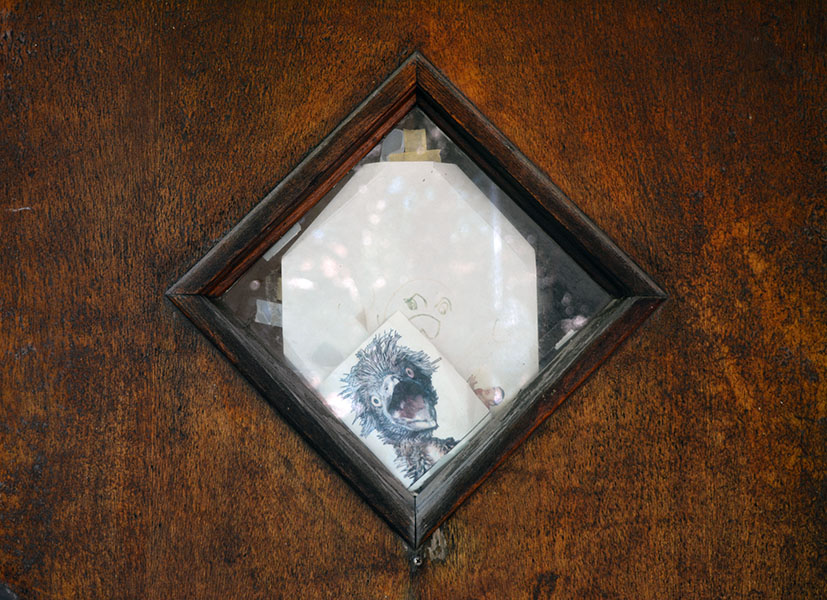
I first met Jno at Beret International Gallery, ran by Ned Schwartz, around 1993. One of the Uncomfortable Spaces, Beret, along with Tough, MWMWM, and Ten in One were a collection of alternative art galleries known for presenting edgy experimental visual art in Wicker Park during the 1990s. In addition to Jno, a number of established artists, Jesse Bercowetz, Stephany Brooks, Carol Jackson, Dennis Kowalski, Adelheid Mers, Alisson Ruttan, etc., found early footing due to their support. The Uncomfortable Spaces spawned a number of unconventional galleries, Armpit, Bodybuilder & Sportsman, Dogmatic, Drive Thru, and the Standard, that held similarly minded art approaches to presenting performance and visual art into the 2000s. Jno was omnipresent in the arts community at this time. Highly supportive of his peers and uninterested in the competitive nature associated with commercial fine art production, the Uncomfortable Spaces was the perfect environment for Jno’s aesthetic practice.
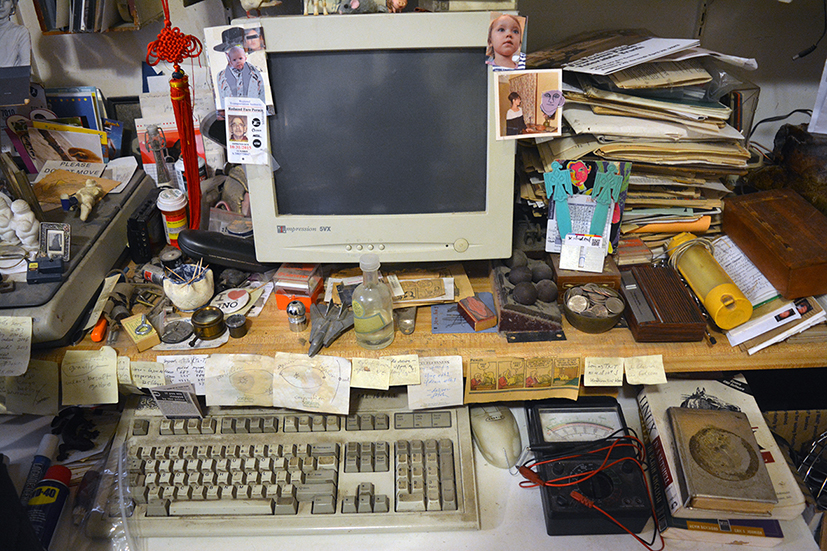
1994 is a year I recall clearly in mind. I participated in Beret’s Worst Show along with Jno, Walter Andersons, Ron Grenko, Aimee Mower, Mike Slattery, and roughly 50 others. This effort was a visual arts misadventure of the lowest order, full of comedy, irony and tomfoolery. Though clearly lowbrow, I still consider this event one of the highpoints in my career. Also, at this time, I began teaching Photo 1 in the Photography Department at Columbia College. This class was co-taught. I was assigned the darkroom section and partnered with Jno, who taught the lecture side. New to teaching I fumbled about miserably, while Jno maintained coherency. Jno was a natural teacher. He understood that to be critical did not mean to be difficult or unnecessarily hard on his students. Jno was technical in describing applied approaches and analyzing conceptual and formal aspects of photographs. He avoided creating busy work for his students. He wanted them to be thoughtful and deliberate in approach, yet be able to identify and understand how mistakes could be used as advantages. It was always about learning something new. Though I was a colleague, I see myself as one of Jno’s students. In part, he taught me compassion and patience in dealing with colleagues, students and navigating academia’s shortcomings. We taught together off and on until 2001.
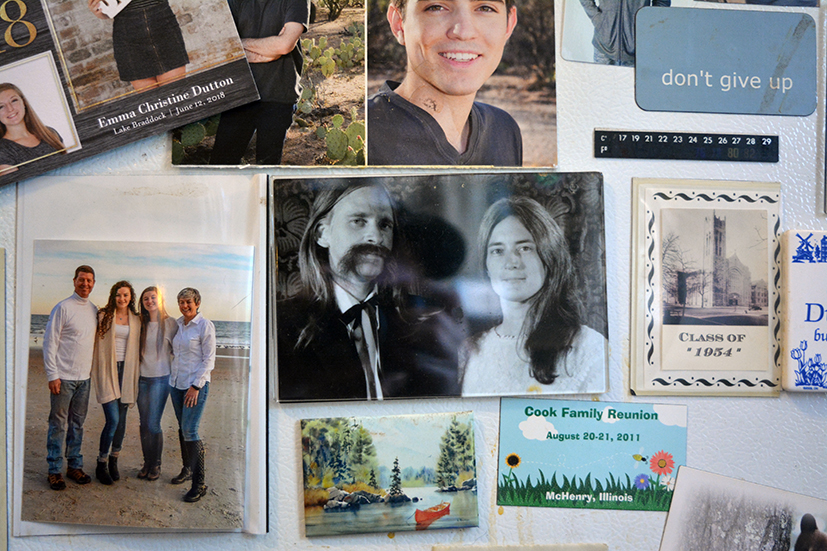
Jno and Claudia on their wedding day), Ravenswood, Chicago, 2019
I visited Jno’s Ravenswood home on a handful of occasions during and after our professional relationship. We would sit and take coffee in his kitchen as a litany of pets wandered in and out of the space. His and Claudia George’s home always felt warm and welcoming. We became friends. Initially, I believe he was amused with my having spent extended time living in the Netherlands and my limited and failed attempts at speaking Dutch. Jno was born in Holland at the inception of WW2, endured Nazi occupation in his youth, but rarely shared this information unless conversation elicited such response. He was not a braggart or one who felt need to be the center of attention. He knew that this thing, “life”, was much more complex and larger than the individual. Each conversation with Jno felt new, fresh and insightful. Jno would share knowledge about his recent readings on a range of topics that included innovations in physics research, reworking old computers, new art ideas and projects, but he was most interested in hearing about what others were up to. The conversations were never mere chit chat or rumor-based. Jno did not waste time on such trivial pursuits. With Jno there was a genuine investment in intelligent dialogue that I wish was more commonplace in my life.
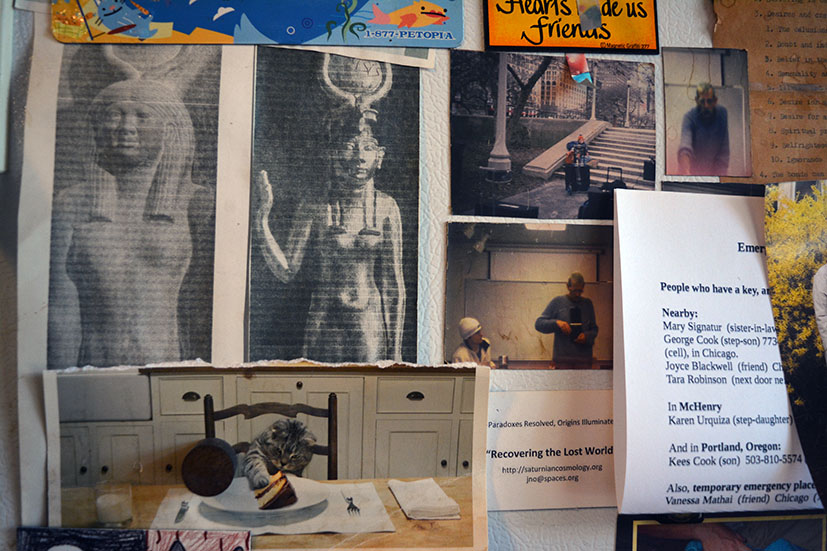
Recently I visited Jno Cook’s home once again. I felt a need to return, photograph his home, and speak with Claudia (Jno’s wife) and his sister Mary Signatur (Jno’s sister). The Cook-George home is an amazing place. Part time capsule embedded in the last century. The environment has been essentially unchanged since Jno’s passing last November. Their home is densely packed with artworks produced by Jno and others, family pictures, a pooch named Maya, books in all quarters, and an array of odd objects that must hold some type of personal importance or memory. Though Jno was not physically present, there was still a sense of this remarkable man. Claudia, Mary and I sat in the kitchen discussing Jno’s youth, his obsession with knowledge and his role within the family. Ignorant of the later, Claudia and Mary shared a number of family stories. Jno was first and foremost a loving father who raised a healthy family. They shared stories about camping trips, home renovations, the early days upon arrival in the states, the measured manner in Jno’s approach to fatherhood, his life-long love of his family and pets, and a number of encounters for which I had not heard. I believe Claudia and Mary continue to hold and convey Jno’s passion for sharing new ideas and stories. Both are retired nurses, easy in conversation and clearly understand the multifaceted dynamics of communication, family and society in our present day milieu.
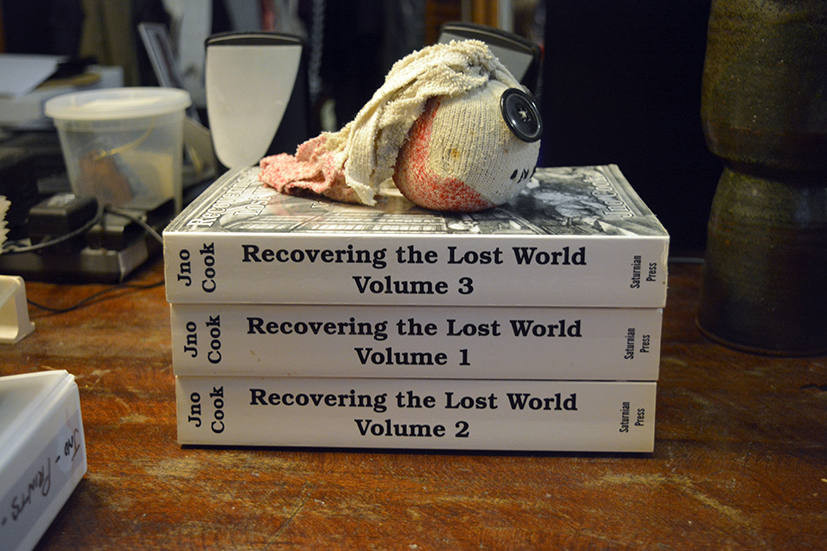
Ravenswood, Chicago, 2019
Also, at this visit we toured the Cook-George home making photographs assisted by conversation. Jno worked in the same corner of the kitchen on the same computer system for years. He found no need to upgrade or stay current with unnecessary technological innovation. His approach was simple. He required knowledge without all the fluff. I can only speculate, but I believe Jno maintained the same computer system for more than 20 years. This is unheard of today. In the front room we looked at family photographs that illustrate a happy clan and a kinetic sculpture, Outside Ptolemy’s Universe, that was shown as part of the “Scary Machines” exhibition at Beret International Gallery in 1992. On the 2ndfloor was a massive library with books on histories of various ancient cultures, earth science, philosophy, and a range of other obscure topics. There were a number of artworks, papers and photobooks on Robert Frank, Walker Evans, and Carolee Schneemann. Jno was a veracious reader as indicated in the copious notes he made in many of the books. It’s evident that his inquiry never subsided. Claudia, Mary, and I closed the day by looking at materials in Jno’s basement workshop. The space still felt active, like another unusual art contraption was readied to surface. I felt overwhelmed by the abundance of energy.
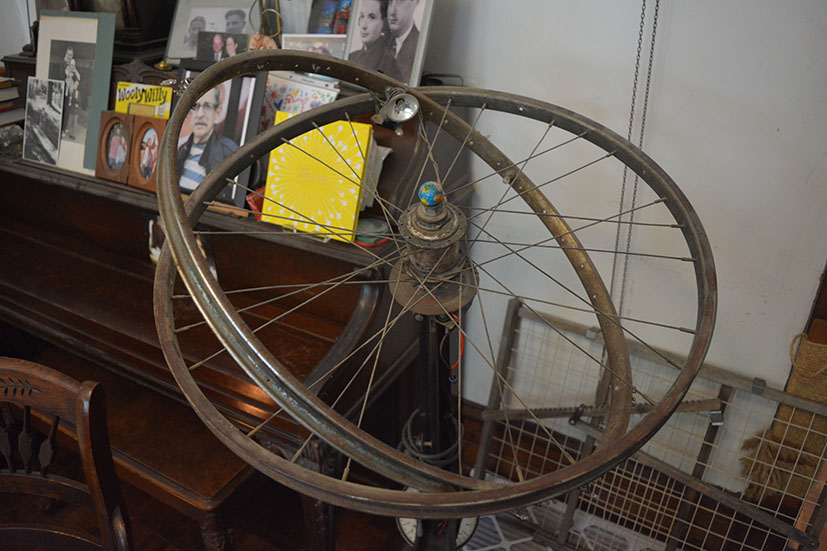
from “Scary Machines”, shown at Beret International Gallery, Chicago, 1992
I’ve been fortunate to meet a number of remarkable spirits in my time in the city. Chicago is littered with interesting creatives that do amazing things. More often than not their toils and tribulations are not recognized in the present for their significance. Often, Chicago misses out on these cultural innovators until they have departed. Henry Darger and Vivian Maier come to mind. I do not think this is the case with Jno Cook. He was not isolated. He had a loving family, many friends, and supporters. Yes, though he was included in the highly promoted Art in Chicago 1945-1995 exhibition at the MCA (Museum of Contemporary Art), his efforts did not achieve mainstream accolades or recognition on par with his inquiry. Ephemeral kudos was clearly not his goal. Jno sought eternal knowledge and a means for disseminating these findings to his colleagues, family, friends, and unknown persons. This is where Jno found importance. There was always a new idea and question that piqued Jno’s interest. He was a lifelong learner. This is why Jno Cook’s approach and engagement with artmaking is important today and in the future. Perhaps, this is precisely why I loved sitting at Jno’s kitchen table in Ravenswood, sipping coffee, holding intelligent conversation and laughing out loud when considering life’s many absurdities.
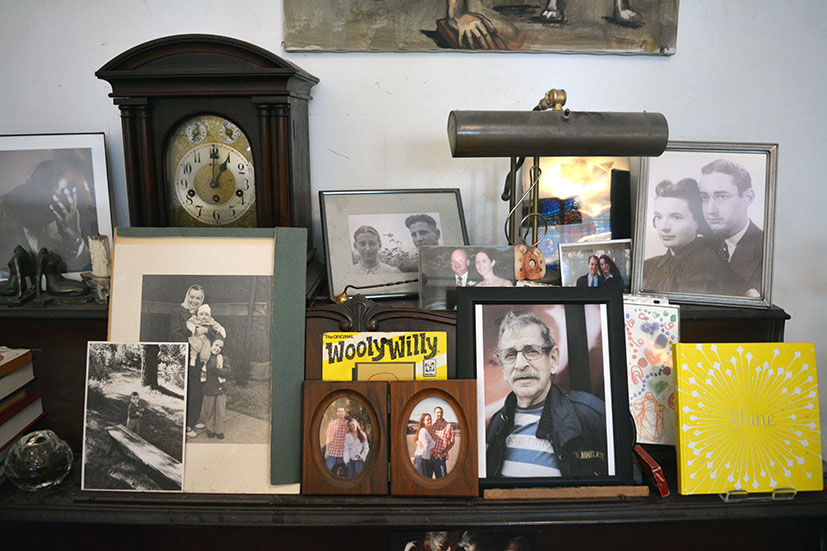
Jno Cook was born in the Netherlands on May 31, 1940 and passed on November 5, 2018 in Tennessee at the home of his son and daughter-in-law, Jacob and Amanda. He is survived by his wife, Claudia George, sister, Mary Signatur, numerous in-laws and cousins, his children (and their wives), Karen Urquiza, Peter (Rhonda), George (Fran), Jacob (Amanda), and Kees (Kirsten). In addition, he has 8 grandchildren, Alexandra, Eduardo, Mary Jane, Andrew, Howard, Sophie, Tova, and Joshua; 4 great grandchildren, Adrian, Eva, Jaime, and Liliana, and two step-children, Shawn and Jasleen. On July 14, 2019 from 2 p.m. to 5 p.m. a celebration of Jno Cook’s life was held at Chicago Theater Works, 1113 W. Belmont Avenue. The event was attended by family, friends and others from the various life experiences Jno connected with.
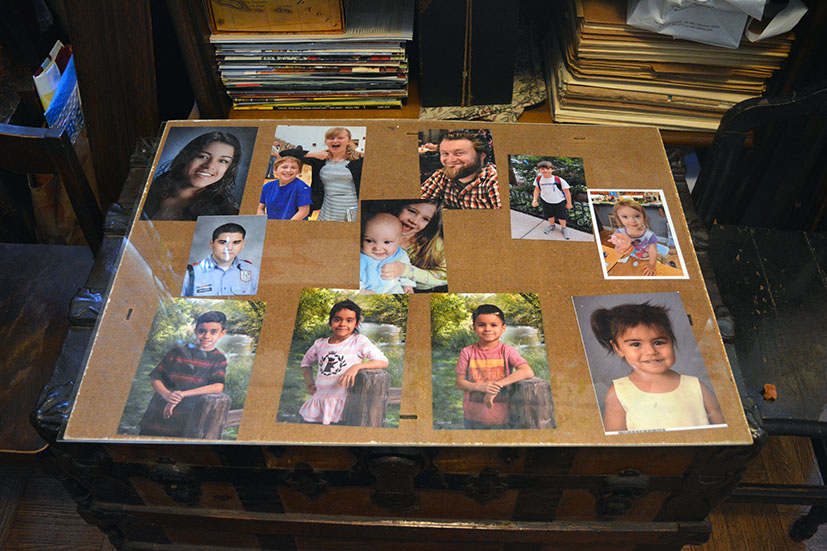
Additional photographs of the home and work of Jno Cook:
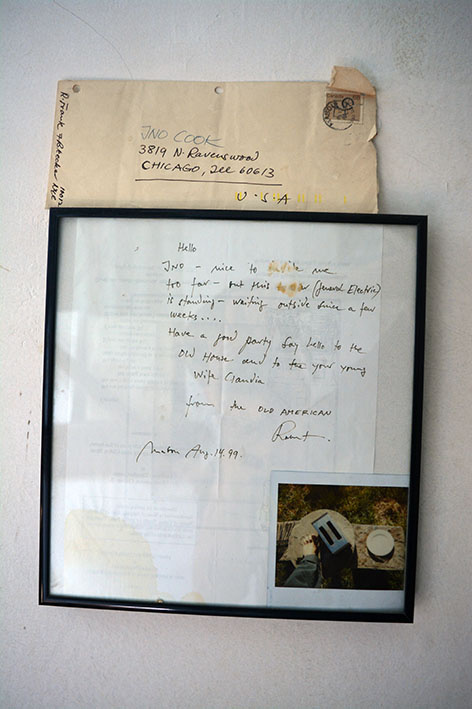
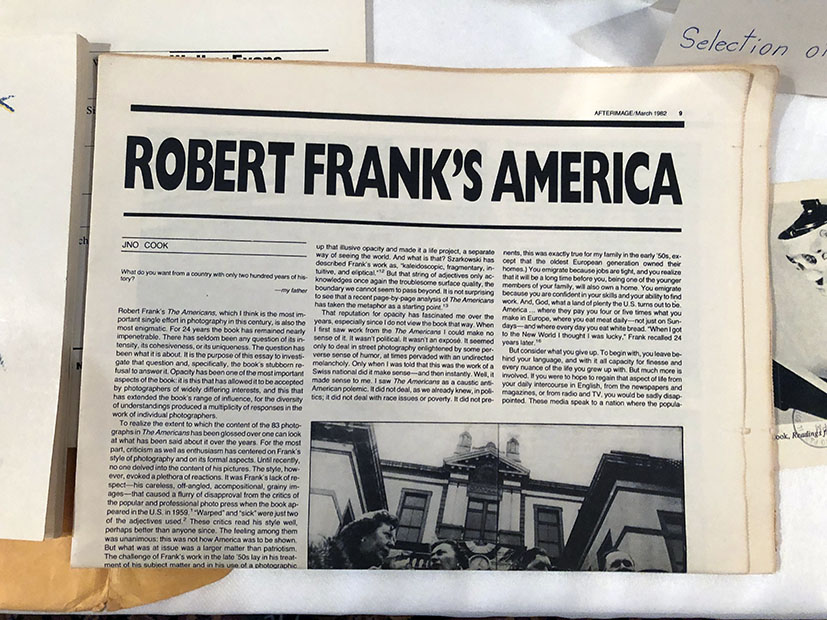
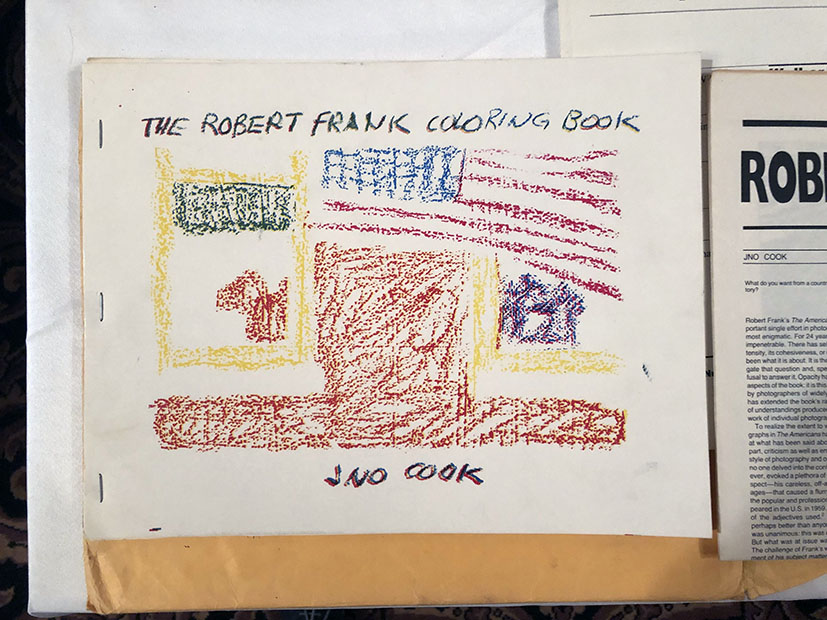
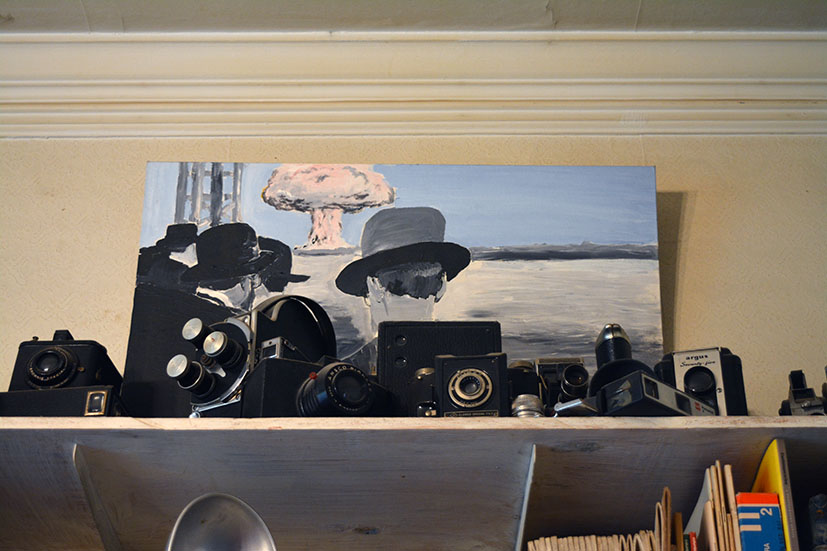
by Jno Cook’s step-son, Sam, 2nd floor work space, Ravenswood, Chicago, 2019
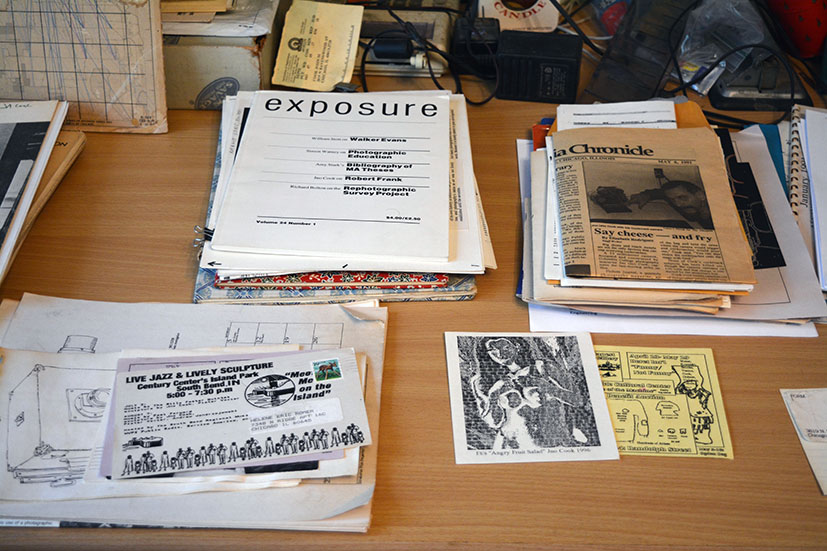
Ravenswood, Chicago, 2019
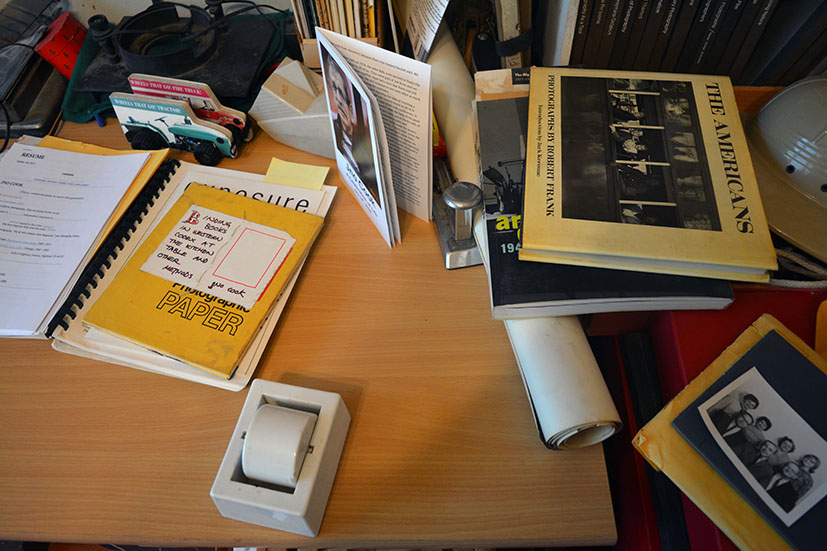
Ravenswood, Chicago, 2019
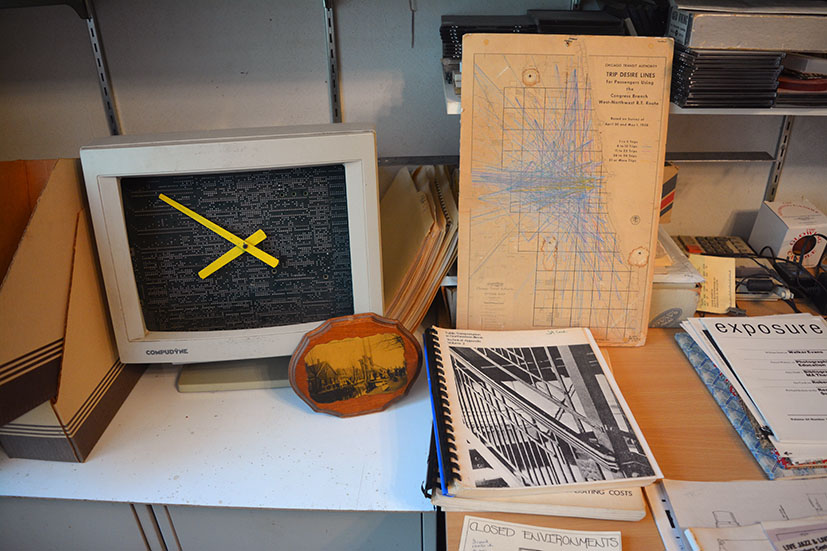
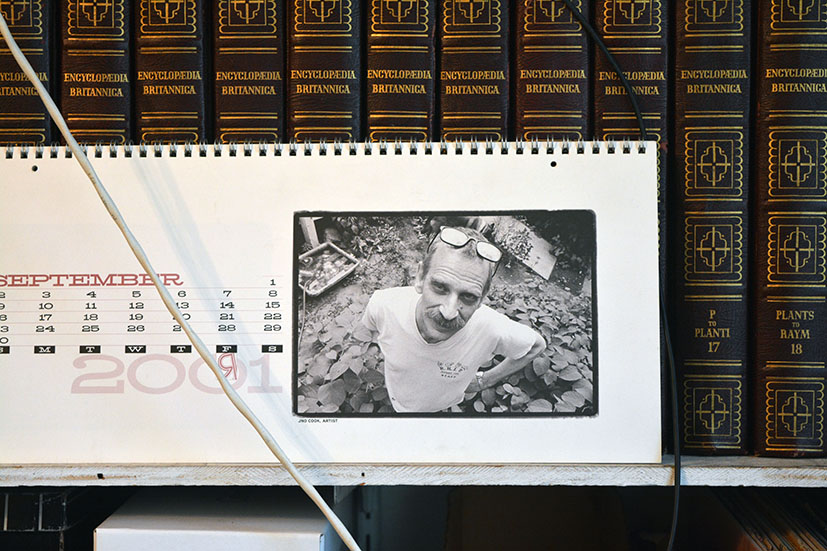
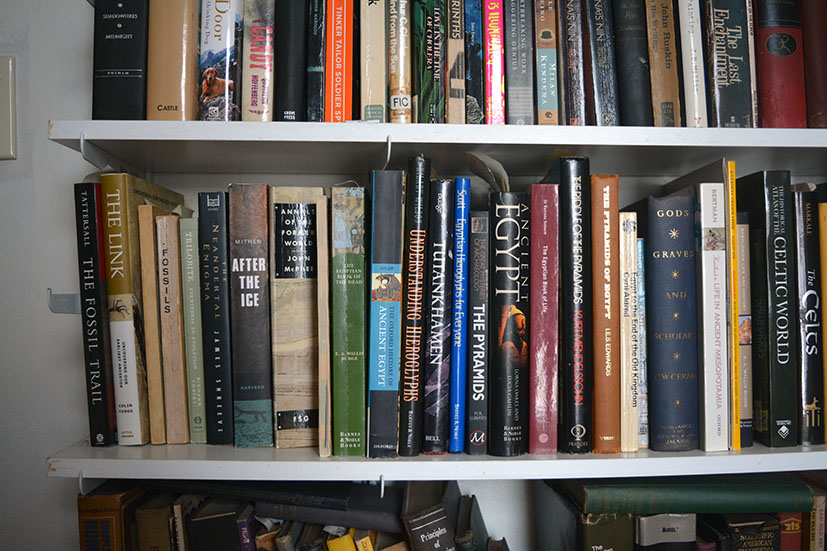
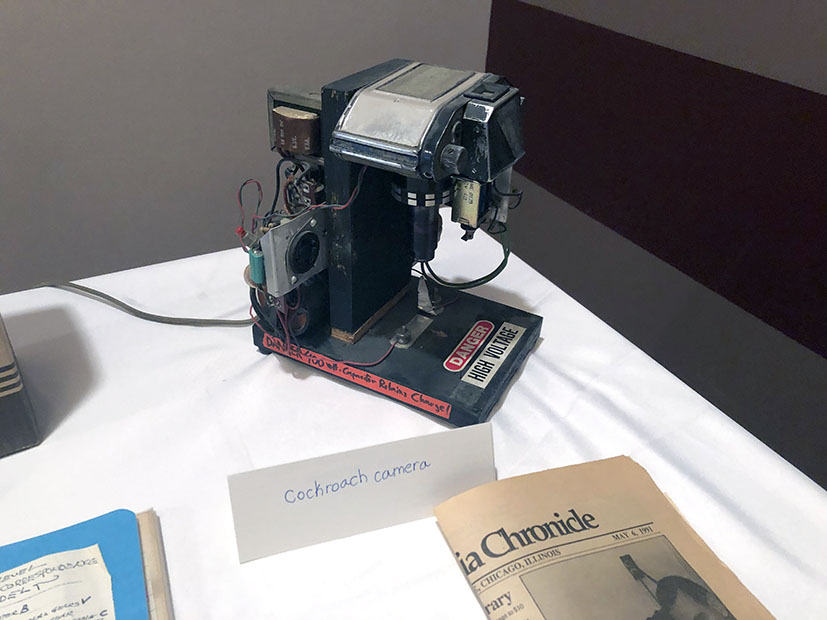
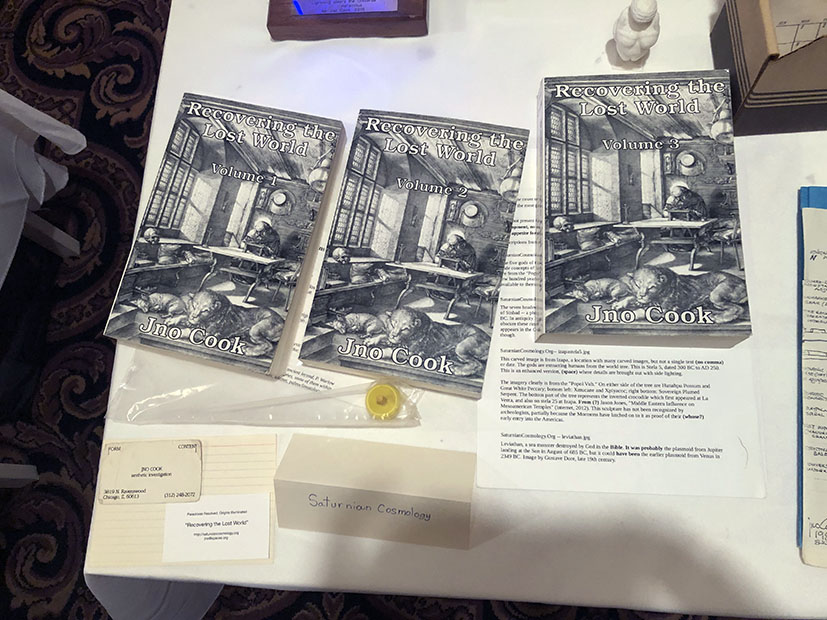
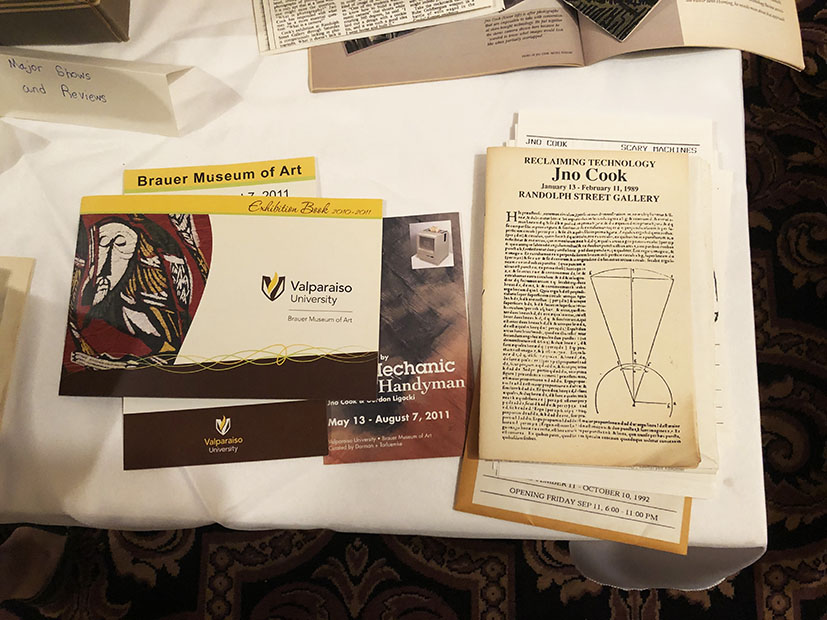
and Randolph Street Gallery, Chicago, 2019
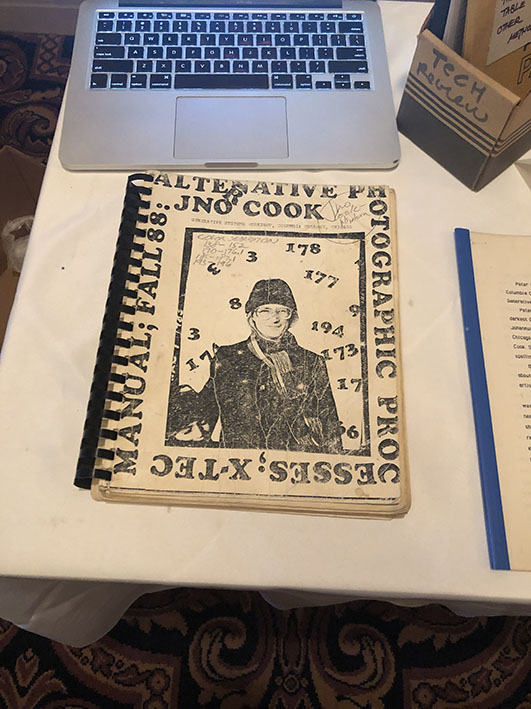
from 1988, Chicago, 2019
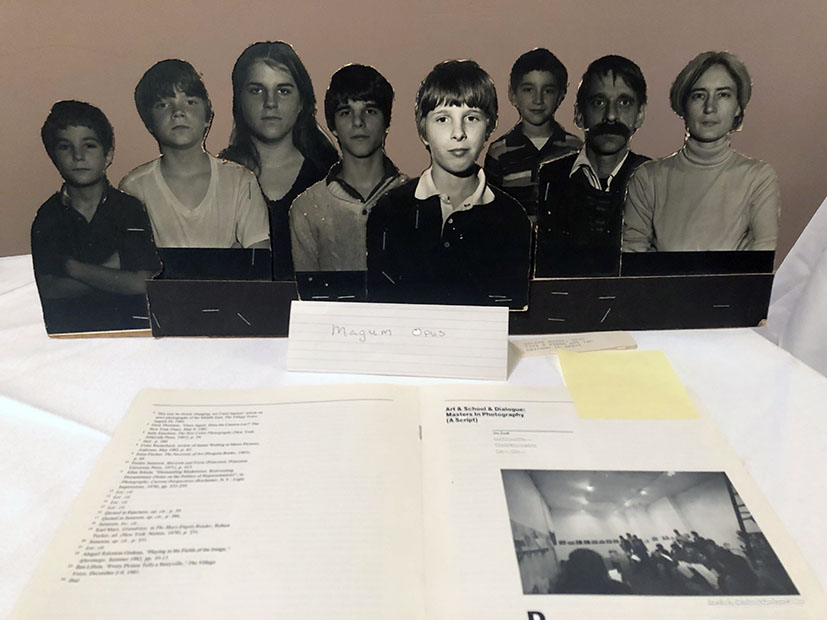
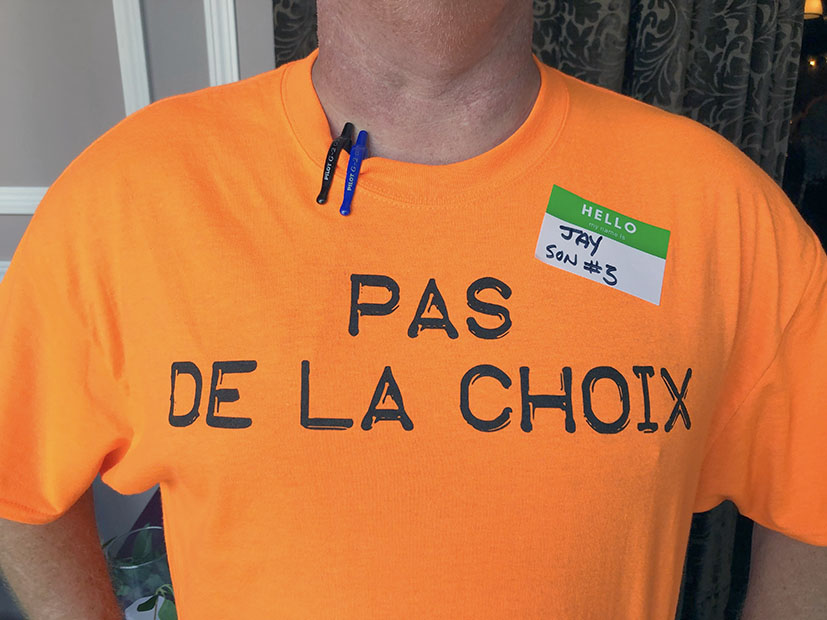
Jno Cook’s family members at his Celebration, Chicago, 2019
For additional information on the aesthetic practice and writings by or on Jno Cook, please visit:
Jno Cook – https://jnocook.net
Art Institute of Chicago – https://www.artic.edu/artists/48176/jno-cook
The COMP Magazine – Saturnian Cosmology – http://www.thecompmagazine.com/jno-cook/
Museum of Contemporary Photography – http://www.mocp.org/detail.php?t=objects&type=browse&f=maker&s=Cook%2C+Jno&record=6
Myths are History – http://www.mythsarehistory.com/cook-jno.html
Recovering the Lost World – https://www.amazon.com/Recovering-Lost-World-Jno-Cook/dp/0997237910
Saturnian Cosmology – http://saturniancosmology.org/
Spaces.org – http://spaces.org
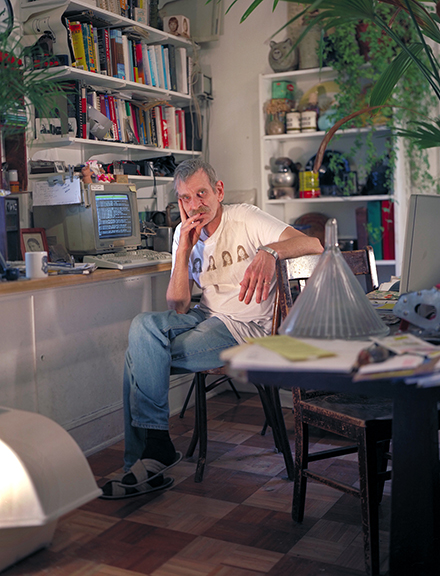
Photographs and writing by Chester Alamo-Costello


